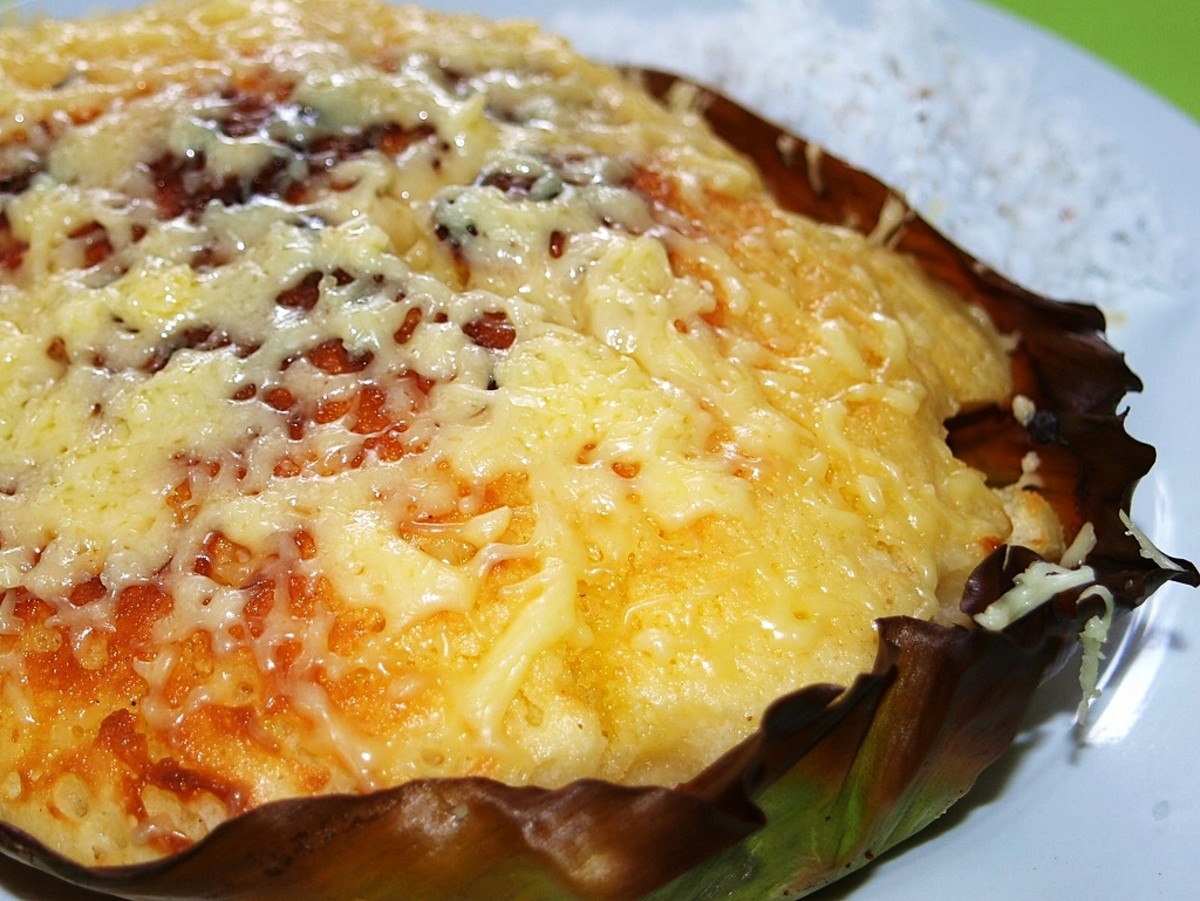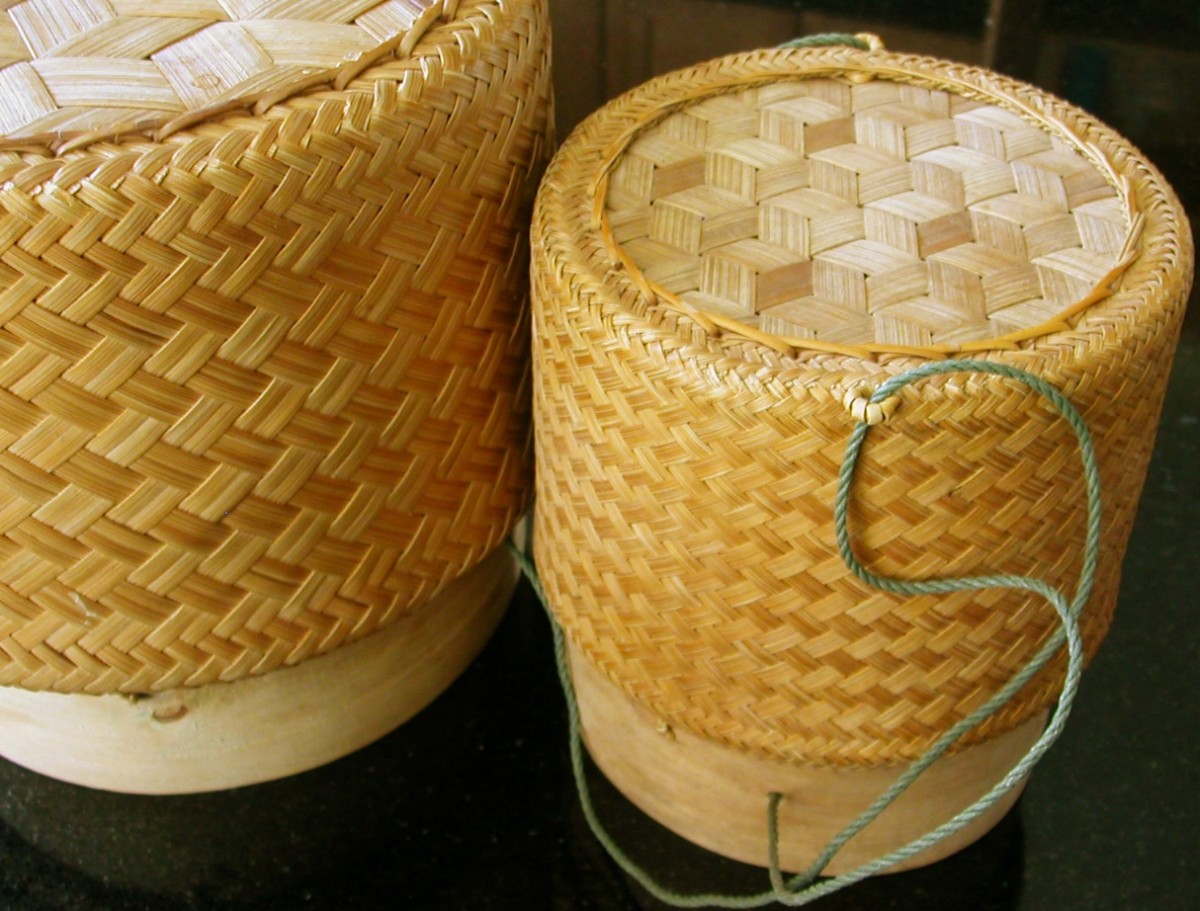- HubPages»
- Food and Cooking»
- World Cuisines»
- Southeast Asian Cuisine
Foods of Indonesia: Top 8 Awesome Indonesian Dishes
Indonesia has some of the spiciest foods in the world! Many Indonesian dishes are hotter than Mexican and Dutch cuisines. Being a country rich in heritages and traditions, these aspects have greatly influenced Indonesian cuisine. Indonesian recipes are prepared with superb culinary techniques that help marry and enhance the flavors of every dish. The robust flavors, spicy ingredients and culinary techniques of Indonesia were inspired and obtained by trade from India, China, the Middle East and Europe. However, there are several dishes and spices indigenous to Indonesia that have become popular around the world, including satay, cloves, nutmeg and beef rendang.
In Indonesia, there is rarely a chance you will ever taste the same flavors twice because each region has their own traditional cuisine and customs. For instance, the Sundanese of West Java, Indonesia still enjoy hot and spicy ingredients and flavors, but their cuisine contains plenty of freshness, including fresh raw vegetables and fresh fish. However, Padang cuisine, the food of the Minangkabau people of West Sumatra, takes more of a decadent approach, featuring more rich and creamy textures and spicy flavors.
Photo Title: Rice
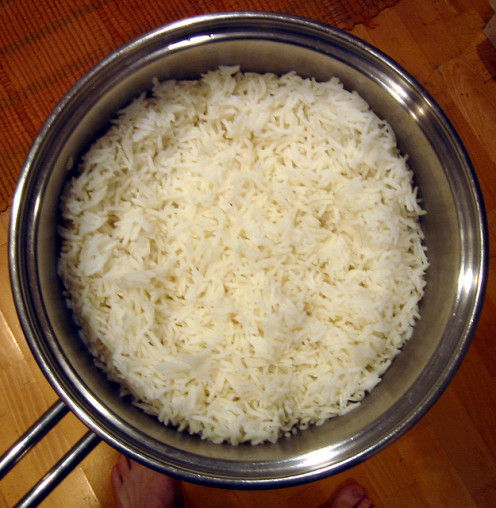
Importance of Rice
Although each Indonesian region may have their own recipes, there is one staple food that is consumed by the majority of the country - rice. Rice plays a significant role in Indonesian culture, economy and meals. Not many dishes are served in Indonesia that does not contain rice. Indonesians consume rice for breakfast, lunch and dinner. Rice is served up in several different ways in Indonesia including plain.rice (nasi putih) with some proteins and a couple of vegetable dishes on the side, rice wine (brem), fried rice (nasi goreng) and “ketupat,” rice wrapped in coconut leaves and steamed. Rice helps complete many popular dishes in Indonesia.
Photo Title: Chicken Satay
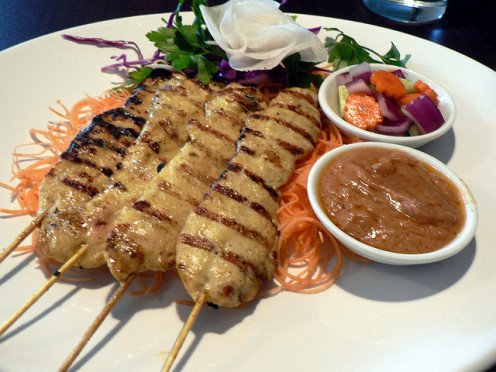
Preparation
Meats used to make satay are sliced or diced and marinated in spices, like turmeric. Then, it is placed on a skewer and grilled or barbecued over hot charcoal or wood. Finally, it is served with a generous amount of peanut sauce. There is no one way of cooking satay. With so many ethnicities in Indonesia, flavors of the dish will vary in different regions.
|
|---|
1. Satay
Satay, or sate is a popular dish and delicacy in Indonesia that is made of small pieces of grilled meat, placed on skewers, cooked and served in a peanut sauce. When it comes to making satay, several kinds of meats can be used, including chicken, beef, pork, fish, mutton, goat, or even tofu. It is believed the dish has originated from the Java region of Indonesia and due to its popularity, it has become the national dish of the country. Whether it’s a street vendor, celebration or a classy restaurant, Satay can be found almost anywhere in Indonesia. Arab traders were responsible for introducing the dish to other nations including, Malaysia, Singapore, the Philippines and Thailand.
Photo Title: Nasi Goreng
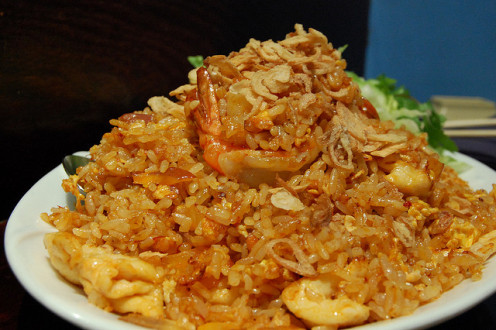
Preparation
There are several main ingredients that composes a nasi goreng dish, such as pre-cooked rice, garlic, salt, shallots, chili pepper, turmeric, onions, nutmeg, ginger, garlic paste and palm sugar and vegetable oil. Others recipes suggests adding black pepper, fish sauce, shrimp paste (terasi) and powdered broth to enhance flavor and eggs.
|
|---|
To make nasi goreng, a little cooking oil or margarine, sweet soy sauce and other main ingredients are added to pre-cooked rice and fried together in a pan or wok. Other ingredients can be added, such as leftover meats, eggs even shrimp.
|
Nasi Goreng Sambal Fried Rice Paste
2. Nasi Goreng
Nasi Goreng is Indonesia’s twist on fried rice, a traditional Chinese dish. Like many countries reason for a fried rice dish, Indonesia created Nasi goreng as a way to keep from throwing away pre-cooked rice. Traditionally, Indonesians make nasi goreng at breakfast as a way to do something new with their leftovers. Today, this main course is also considered a national dish and is served at dinner parties, restaurants, and roadside food stalls. Nasi Goreng is a popular dish in Malaysia, Singapore, Southern Thailand, Brunei, the Netherlands and Suriname.
How can you tell which variety belongs to Indonesia with so many variations of fried rice from different countries? Indonesian nasi goreng is spicy and contains plenty of sweet soy sauce, or “kecap manis,” or as a main ingredient. Crispy elements, like fried shallots (bawang goreng), fried onions or prawn crackers, (krupuk) are usually added to Indonesian variations for a crunchy texture.
Another common Indonesian version of nasi goreng is made with salted dried fish called “ikan asin.” Nasi Goreng Istimewa (special fried rice) is fried rice mixed with sausages, eggs, pickles and prawn crackers.
Photo Title: Padang lunch at Sari Ratu with Yahoo! Indonesia Team
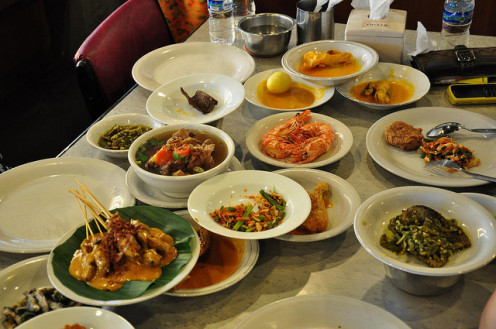
Preparation
The dishes of a nasi padang feast derives from the city of Padang. Some of the dishes commonly served are meat and seafood dishes smothered in a spicy, curry sauce, like gulai chicken; vegetables cooked in coconut milk, like daun ubi tumbuk; or fried seafood dishes, like rajungan (crab) goreng and baluik (eel) goreng. Also chili dishes, like udang dalado (shrimp in chili), terong balado (eggplant in chili) and dendeng balado (thin strips of crispy beef in chili), just to name a few more.
|
|---|
3. Nasi Padang
Nasi Padang is a feast of Padang-style steamed rice served with a variety of meat, seafood and vegetable dishes and hot and spicy chili pepper sauces (sambals). It is a native dish of Indonesia, specifically originating from Padang, the capital city of West Sumatra. Nasi Padang is still outrageously popular in its region of origin and in other Indonesian regions, including Java, Sulawesi, Papua, Kalimantan, Nusa and Tenggara. Other countries have also embraced this authentic Indonesian cuisine, including Singapore, Malaysia and Australia.
Photo Title: Gado Gado @ Hawker's Delight
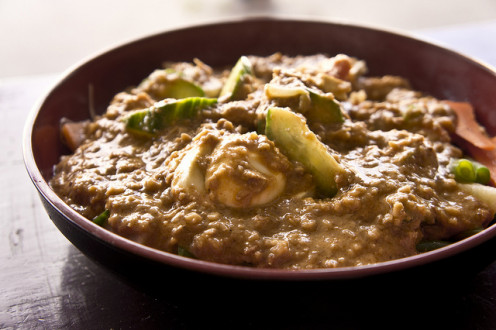
Preparation
Vegetables are an important ingredient for this dish, but varies for different variations of gado-gado. Some vegetables used in this salad are corn, cabbage, bitter melon, green beans, spinach, string beans, bean sprouts, potatoes, kangkung (water spinach), chayote (squash/ gourd), jack fruit (fruit used as a vegetable) and cucumber. Most of the vegetables are blanched, then shredded, sliced or chopped. However cucumbers are left uncooked, and the potatoes are boiled.
|
|---|
Tofu and tempeh, two types of soy products, are sliced, fried and added with vegetables. Additionally, sliced, boiled eggs are added.
|
To marry everything together, a generous amount of peanut sauce or is added to the vegetables and soy foods. A peanut sauce starts with fried, grounded peanuts, coconut sugar, chilies, shrimp paste salt, tamarind liquid (added for consistency), lime juice and a little water to help dilute the sauce or dressing.
|
Note: Coconut sugar can be replaced with brown sugar. Fried, grounded peanuts can be substituted with mashed kidney beans for a thicker texture. Chopped, fried shallots and/or rice can be added as a garnish.
|
Gado-Gado Dressing
4. Gado-Gado
Gado-Gado, or lotek is a salad dish from the West Java region of Indonesia that puts a little bit of everything on a plate. Although ingredients for this recipe can vary, this salad contains up to 11 different vegetables, eggs and then smothered in a peanut sauce as a dressing. Gado-Gado, means “mix-mix” in Indonesia which accurately describes the salad as a whole. Due to its generous amount of ingredients, gado-gado is usually served as a main course. Also, there is a raw version of gado-gado called, “Karedok.”
If you are ever in Indonesia and decide you want to try gado-gado, you won’t have to look hard. This dish can be found at food stalls, hawker carts, Indonesian hotels and restaurants. You may not have to travel as far as Indonesia to taste this ultimate salad either because Indonesian-style restaurants around the world serves it too.
Photo Title: Bakso Daging Sapi
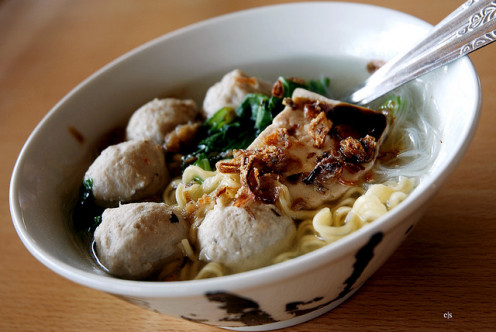
Bakso Chili Sauce
Preparation
As a versatile food, there are various recipes for these meatballs as an ingredient. Bakso itself, is made with a beef paste and a small amount of tapioca flour. Traditionally, bakso is served in a soup with beef broth as a base, yellow noodles, rice vermicelli (thin noodles), seasoned vegetables, celery, Chinese kale (kailan) and garnished with fried shallots, boiled eggs and fried wonton. Other ingredients that can be added are bean sprouts, Chinese green cabbage, steamed fish dumpling (siomay), or a steamed meat dumpling.
|
|---|
Another way to serve basko is to slice it and use it as an ingredient in nasi goreng and mi goreng recipes. Or, bakso can be stuffed and shaped like a box.
|
5. Bakso
Indonesian meatballs, or bakso, are made of a meat paste known as “beef surimi.” Bakso has a firm, dense texture that is often compared to Chinese meatballs. Typically, beef is the meat of choice when it comes to making bakso, but these meatballs can be made with other meats, such as fish, chicken or shrimp. It is a versatile food that can be eaten alone or used as an ingredient in other dishes. Among the Indonesian people, bakso is a popular food. However, it gained global notoriety after President Obama mentioned a bakso dish as one of his favorite foods after visiting the country in 2010. Bakso is everywhere, including traveling food carts and restaurants. Additionally, pre-made bakso is frozen packaged and sold in grocery stores.
Photo Title: Ayam Goreng
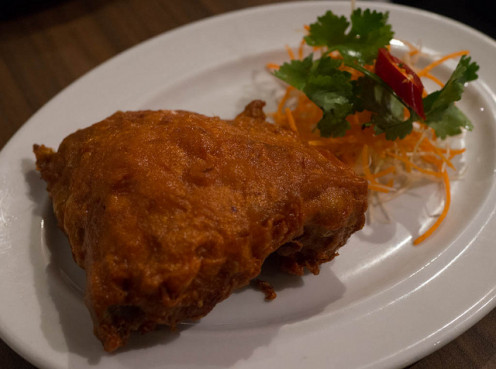
Preparation
Spice blends for ayam goreng differ from region to region. However, there are some main ingredients usually included in all recipes: turmeric, garlic, salt, sugar, ground shallots, Indian bay leaves, tamarind juice, lemongrass, candlenut and galangal (Chinese ginger).
|
|---|
First, the spices are blended together. Then, the chicken pieces are saturated and marinated in the spice mixture. Finally, the chicken is deep fried in very hot coconut oil. Ayam Goreng can be served with tofu, tempeh, steamed rice, sambal terasi (chili with shrimp paste) or with a dipping sauce made of chili, shallots and sweet soy sauce (sambal kecap). Or, garnished with slices of cucumbers and tomato.
|
Ayam Goreng Seasoning
6. Ayam Goreng
Ayam Goreng means “fried chicken.” It is a phrase that refers to Indonesian and Malaysian recipes for chicken deep fried in coconut oil. This Southeast Asian fried chicken recipe greatly differs from U.S. Southern fried chicken. In the southern region of the U.S., fried chicken is coated in a flour batter, but ayam goreng lacks a batter and is marinated in a mixture of rich spices.
There are countless recipes of ayam goreng, including Padang-style ayam goreng, ayam goreng lengkuas (galangal fried chicken), Jakarta-style ayam goreng, Sundanese hayam goreng and Javanese-style ayam goreng.
Photo Title: Soto Kaki Kambing
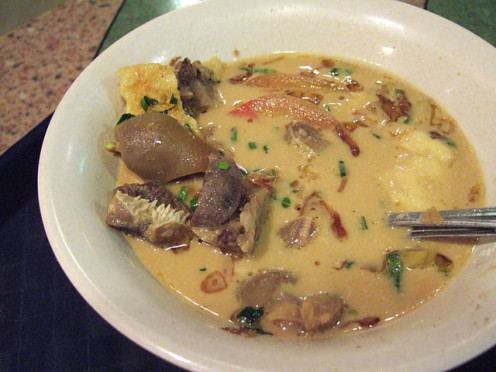
Preparation
There are several varieties of chicken, beef, offal, mutton and water buffalo sotos. Soto ayam is Indonesian chicken soup that is served with a warm, smooth texture. Due to such a comforting texture, soto ayam is considered a comfort food. Every region of Indonesia has their own recipe for soto in which these soups are usually named for.
|
|---|
There are several main ingredients used in soto, such as rice vermicelli, scallions and mung bean sprouts. Traditional spices used to make soto are shallots, garlic, turmeric, salt, ginger, galangal, pepper, candlenut and coriander.
|
Textures of soto varies depending on the recipe. The broth served with it can be pale and light, like soto bandung, or made creamy and thick with coconut milk, like soto kaki.
|
Indonesian Chicken Soup
7. Soto
Soto is the name for traditional soup recipes in Indonesia. It was originally introduced to Indonesia by Chinese immigrants. Later, Javanese immigrants popularized soto in Suriname. As traditional Indonesian cuisine, soto is considered a national dish and served everywhere from simple street food carts to luxurious hotels. A typical bowl of soto contains broth, vegetables and meat. Soto can be served with a variety of side dishes and condiments, including, eggs, mashed potato patties, fried tofu or tempeh, fried shallots, hot chili sauce and sweet soy sauce.
Photo Title: Aunt Lay Leong's Rendang Beef
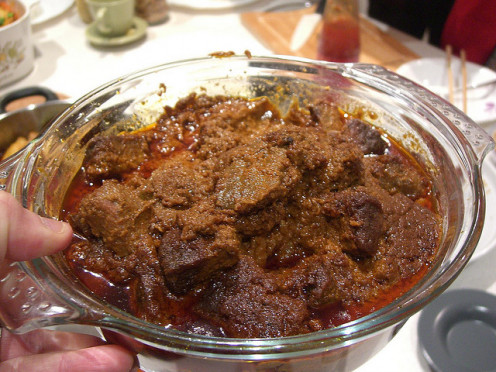
Preparation
There are several variations of rendang, including seafood, chicken and duck. However, all variations start with a few main ingredients, such as meats, chili, coconut milk, chili pepper, ginger, galangal, turmeric, garlic, shallots and lemon grass. With all of these rich spices and ingredients is what makes rendang a spicy, flavorful dish
|
|---|
It takes a long time to cook rendang. First, there are spices and ingredients that need to be grounded and pounded. The spice blend called “pemasak” by the Minangkabau people is grounded into a paste. Then, the meat is slow cooked in coconut milk and pemasak until the coconut milk nearly evaporates. This cooking technique tenderizes the meat and helps the meats absorb the flavors of the spices. Once rendang is almost done, the meat starts to darken.
|
Rendang is often served with steamed rice, vegetables sides, eggs or cabbage gulai.
|
8. Rendang
Rendang is a globally popular spicy meat dish that originated from the Minangkabau people of Indonesia. Traditionally, the Minangkabau people only prepared rendang for ceremonial occasions, festive occasions, wedding feasts, traditional ceremonies, “Eid al-Fitr” (the Sweet Festival) and to honor guests. Beef rendang is the most popular variation. It contains beef (sometimes beef parts like liver) along with other meats, such as mutton, goat, water buffalo and lamb. Another variation of rendang is dried. Dried rendang can last for weeks.


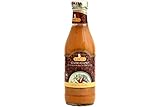


![Bamboe Soto Ayam (Yellow Chicken Soup Seasoning) - 1.4oz [Pack of 6]](https://m.media-amazon.com/images/I/61wSqjGRSLL._SL160_.jpg)

